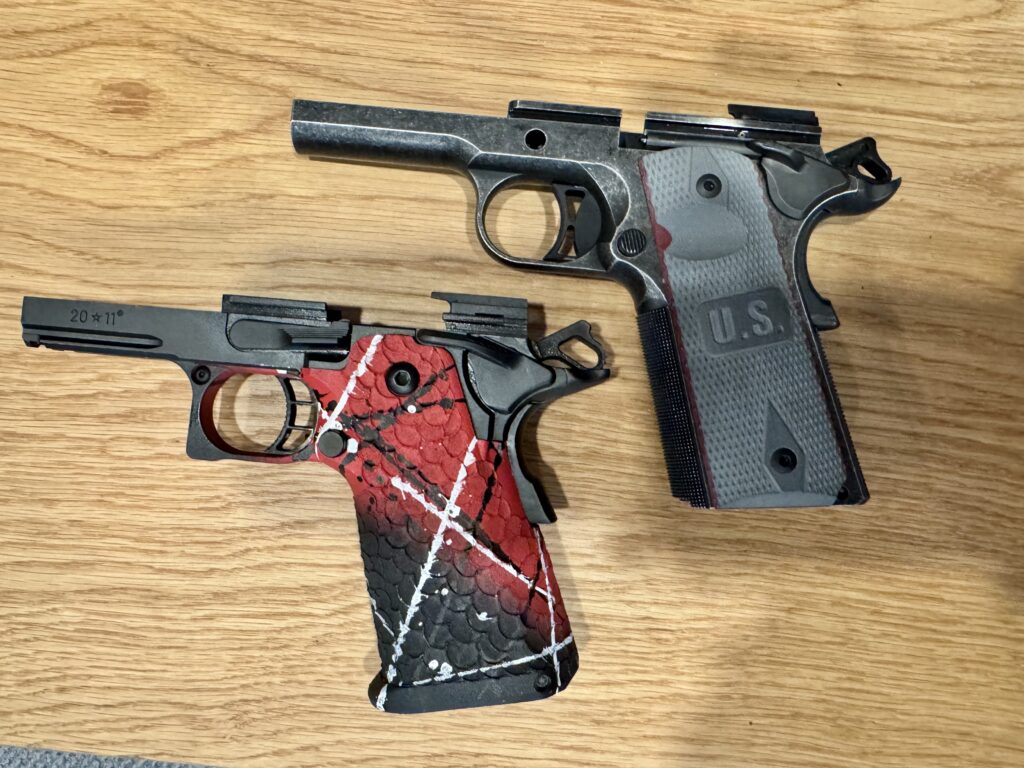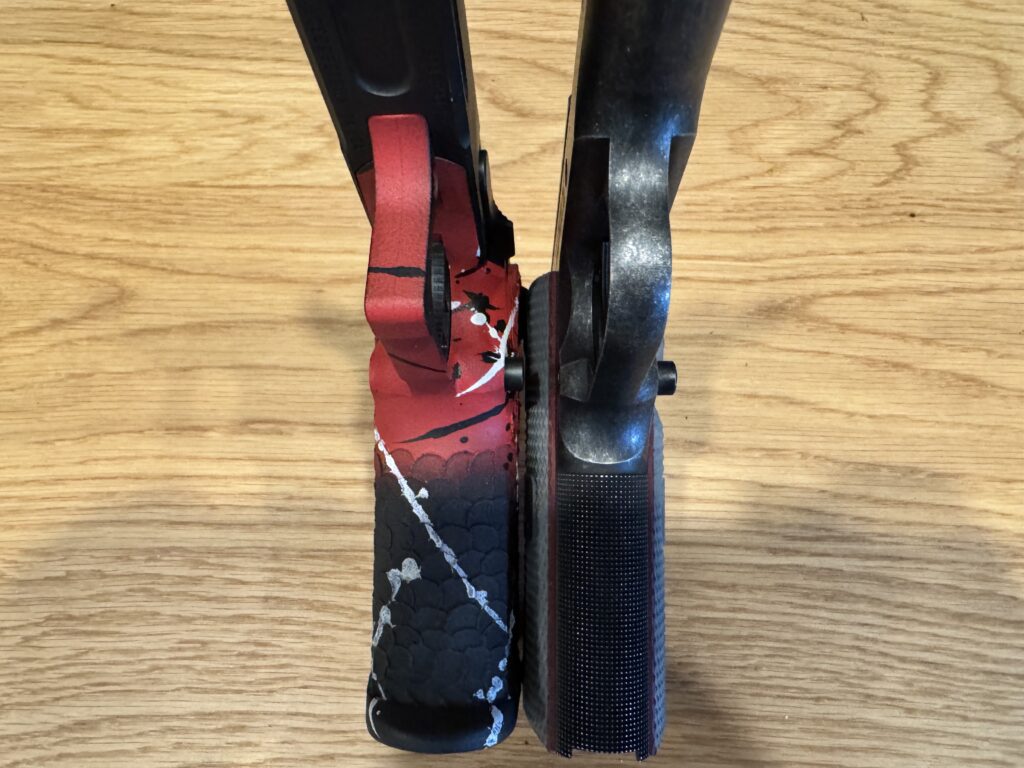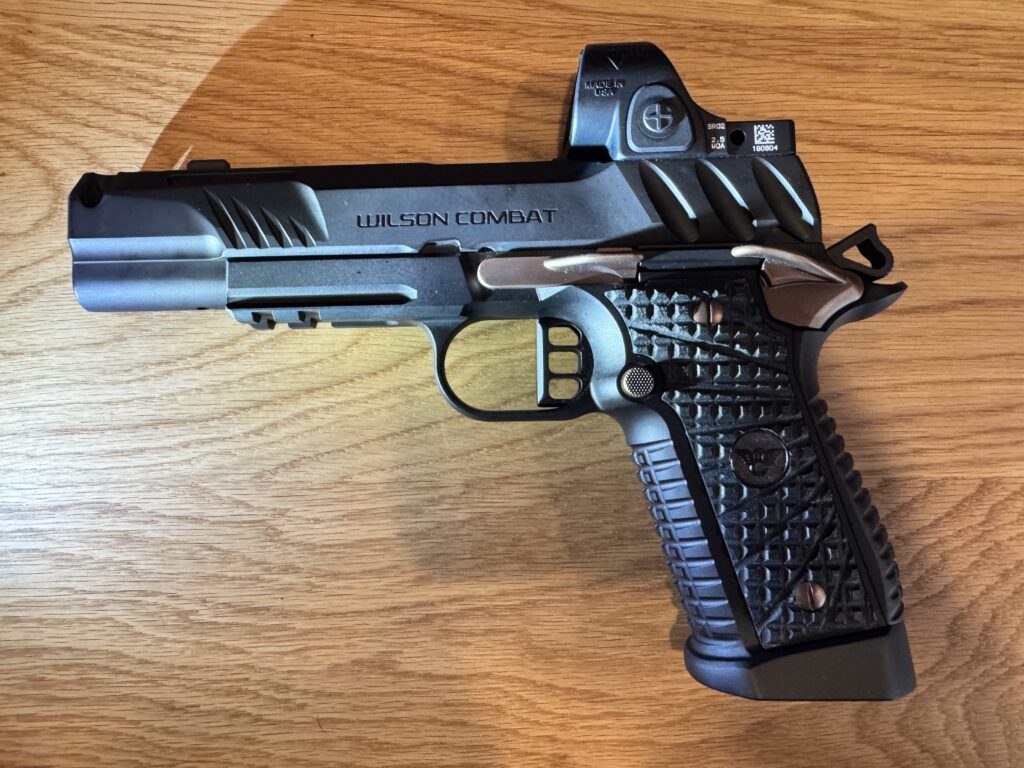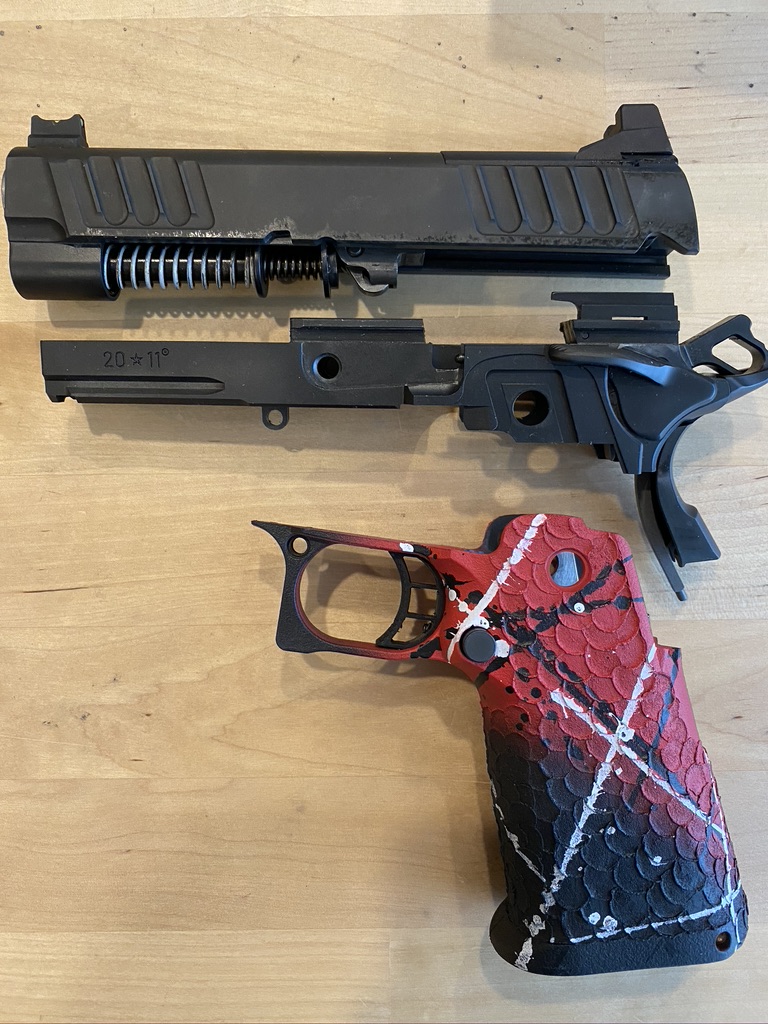What is a 1911 pistol?
Designed in 1908 by John Moses Browning out of whole cloth, this handgun was selected as the US Army’s sidearm in 1911, hence the name. Our servicemen and women carried this pistol for 75 years. Most 1911 pistols are chambered in .45 ACP. The 1911 platform is hammer-fired with a steel slide and steel or aluminum frame with plastic or wood grip panels. “Old slab sides” was an enduring term for this gun. It has a claim to fame as being the gold standard of triggers. “Like breaking a rod of glass,” the trigger take-up is minimal, the trigger break is extraordinarily crisp, and the trigger reset is almost non-existent. In a word: incredible. Field stripping is simple, and the complete takedown and assembly is not difficult. The trigger is single-action only (SAO). To carry the 1911, you rack the first round into the chamber, which cocks the hammer. Push up the thumb safety to lock the slide from moving and the trigger from firing, then holster. “Cocked and locked,” as the saying goes. When you draw your pistol, you disengage the thumb safety, get a good firing grip, which releases the grip safety, and you’re ready to do so fine shooting.
There are three universally accepted downsides to the 1911. First, it’s heavy. That’s a lot of steel to hang on your hip. Second, because the slide is very heavy, it needs a pretty stout recoil spring – which makes racking the slide a job. Finally, the single-stack .45 magazine only holds 7 or 8 rounds, depending on the model.
There are a good number of companies that have specialized in the 1911 and tuning them to perfection – and beyond. Wilson Combat, Dan Wesson, Ed Brown, Les Baer, Kimber, and others will sell you a 1911 for anywhere from $1,500 to $4,000 and up. Common firearm manufacturers like Colt, Smith & Wesson, Springfield Armory, and SIG Sauer all have models ranging from $750 to $1,500… and up. After acquiring my many GLOCKs, I bought two 1911 pistols from Kimber’s Custom Shop. A Tactical Custom II with a standard 5” barrel and an Ultra CDP II with a 3” barrel. Both are tack drivers, but difficult slides to rack – and they are heavy – even the little one. I’m selling them, if you’re interested. ☺️
The 1911 has a single-stack magazine. The magazine slides through the trigger yoke which provides that amazing trigger pull. This makes it difficult to convert the 1911 to a double-stack magazine, because the trigger must be redesigned. Many have tried, but success has been limited. There’s also the thought of chambering the 1911 in 9mm instead of .45 ACP. This increases capacity, but the gun still needs fiddling to adjust the timing to the weaker round, and a necessarily lighter slide… The first company to produce a double-stack, 9mm 1911 was Para Ordnance of Canada, which opened Para USA right here in North Carolina. These pistols were finicky. My gun club had a dozen of them for classes – but they were sold off. Dave Higginbotham has a good review you should read on Para’s attempt at the double-stack 1911. It has proven extremely difficult to build a RELIABLE double-stack 9mm 1911. That said, if you’re interested in a 9mm double-stack 1911 that runs like a top, with an accuracy guarantee, Wilson Combat has cracked the code. The Wilson Combat’s EDC X9 pistol is a work of art that is a delight to shoot. Whether you want the original slab sides, or the new 9mm double-stack, at nearly 120 years old, the 1911 is still a fan favorite, and still holds the title to “best trigger.” Very impressive, Mr. B!
What is a 2011?
Many folks believe that the 2011 is simply a double-stack 1911. Not so! The 2011 is a different animal entirely. Virgil Tripp designed the 2011 from the ground up to be different. Strayer-Tripp Int’l, which morphed into Staccato, built the three-piece 9mm 2011 with a polymer grip module. The polymer grip can dampen the often jarring recoil of the 2011. The pistol retains all the fabulous features of ol’ slab sides, but eliminates most of the downsides, namely, weight, slide manipulation, and capacity. And it is built from the ground up to run an optic!
I have a Staccato C2. It’s all true. It weighs about the same as my GLOCK G19. I can rack the slide with two fingers, press check like a boss, I’ve got 16 round magazines, and I’m running my favorite Trijicon SRO. Sweet!
Bottom Line
Let’s review the differences…

In the picture above, you can see that the 2011 frame has a screw in the front of the trigger guard. The grip is polymer and wraps around the pistol.

The shot below shows the “chubby” 2011 grip width beside its grandfather, the 1911. The grip is much wider on the 2011, which is a significant downside – and the reason I’ve switched to a double-stack 1911 after 5 years with a 2011.

So, don’t get tripped up by the nomenclature used by the YouTube gurus.
A 1911 pistol is a single-stack, single-action only, hammer fired, .45 ACP or 9mm pistol with a steel slide and steel or alloy frame with removable grip panels, thumb safety, grip safety, and a non-pivoting trigger.
A 2011 pistol is a single-stack, single-action only, hammer fired, 9mm-only, optic-ready pistol with a steel slide and steel or alloy frame and polymer grip module, a thumb safety, optional grip safety, and a non-pivoting trigger.
A double-stack 1911 pistol is a single-action only, hammer fired, 9mm pistol with a steel slide and steel or alloy frame with removable or wrap around grip panels, thumb safety, optional grip safety, and a non-pivoting trigger. These are VERY hard to build so they are reliable. In my opinion, the only company successful in this endeavor is Wilson Combat. That’s why, in addition to my Staccato 2011, I now also own two Wilson Combat double-stack 9mm 1911 pistols. The Project 1 and the EDC X9 v2.
The EDC X9 includes the Wilson Combat ERS “Enhanced Reliability System” for 1911 style handguns.
- A robust spring-loaded external extractor that improves extraction in all conditions with all types of ammunition
- A match grade, fluted barrel with single lug geometry to reduce cycling friction, enhance slide velocity, and improve feed reliability
- Removal of the frame rails around the mag opening to further reduce friction and promote function in adverse shooting environments
- A low mass, Tri-Top slide profile for reduced muzzle flip and enhanced cycling
- A user-replaceable front sight and rugged new elevation adjustable Tactical Battlesight with click adjustments to easily adjust vertical point of impact.

See you at the range!
JoeGLOCK
“In a gun fight, you need to take your time in a hurry.” – Wyatt Earp
